No products in the cart.
NEWS
Enhance Tomato Growth with Perfect Companion Herbs
As a seasoned expert in cultivating both plants and livestock, and a content creator for Biogarden.Asia, I understand the profound impact of strategic planting. Companion planting herbs with tomatoes is a technique I frequently recommend because it offers remarkable benefits, creating a healthier, more productive garden ecosystem. By carefully selecting which herbs share space with your tomato plants, you can significantly reduce pest pressure, welcome beneficial insects, enhance soil health, and even potentially improve the flavor and yield of your tomatoes.
While many gardeners focus on pairing vegetables or flowers with tomatoes, overlooking the power of herbs would be a missed opportunity. Herbs are not only culinary stars but also powerful allies in the garden, especially for robust tomato growth. Mastering the art of growing abundant tomatoes isn’t just about nurturing the seeds or selecting the right variety; it’s also about building a supportive community of plants around them. Many herbs are simple to grow, whether you start from seed or plant young starts, offering immediate and long-term advantages to your tomato patch.
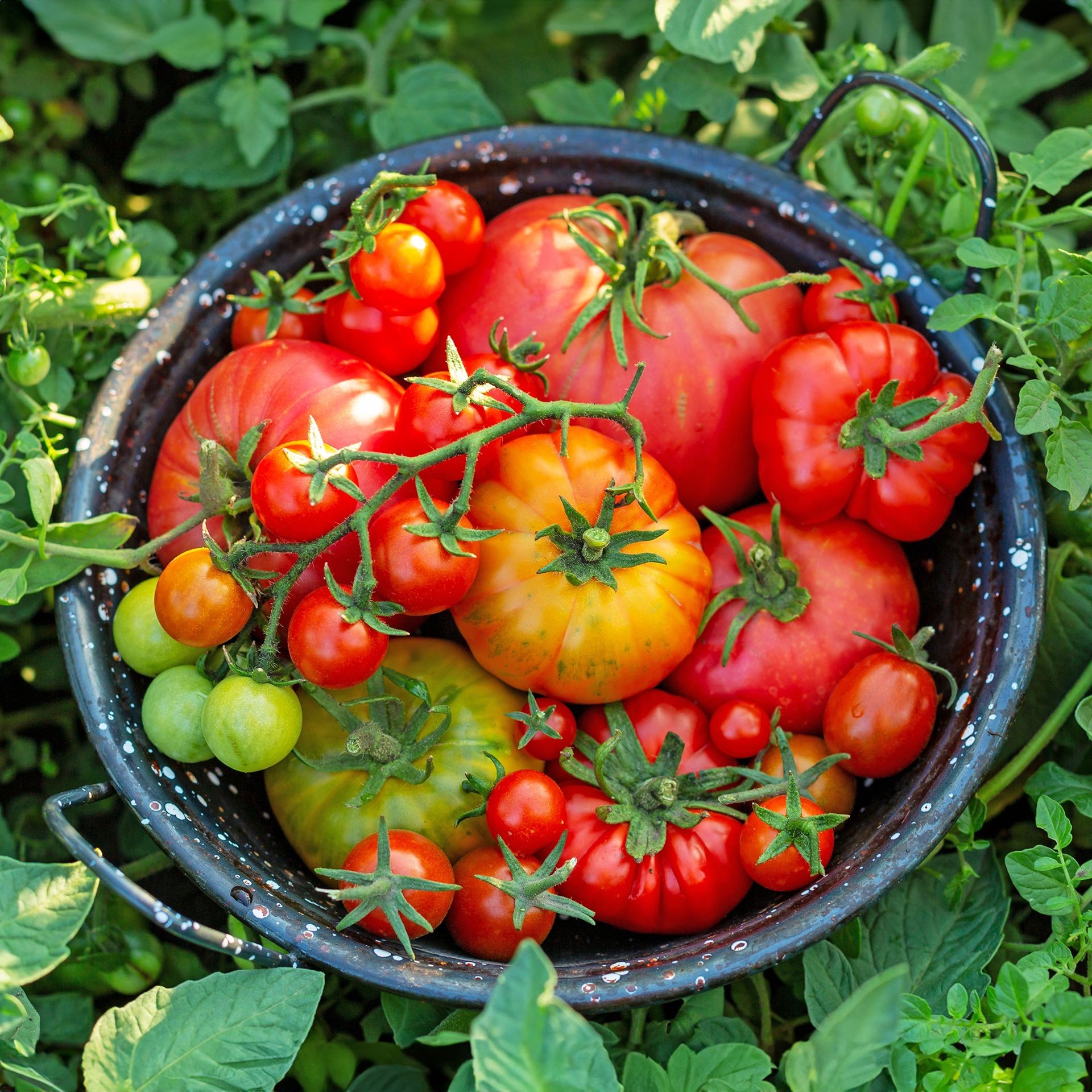 Freshly harvested red tomatoes and vibrant herbs in a garden colander, showcasing successful companion planting results.
Freshly harvested red tomatoes and vibrant herbs in a garden colander, showcasing successful companion planting results.
Why Integrate Herbs with Your Tomato Plants?
Companion planting is the practice of growing specific plant varieties near each other to leverage their complementary traits and foster mutual benefits. When you pair herbs with tomatoes, you unlock a range of potential advantages that contribute to a more resilient and productive garden:
- Attracting Pollinators: Many herbs, especially when allowed to flower, are magnets for bees and other pollinators, which are essential for fruit set and improved tomato yield.
- Inviting Beneficial Insects: Certain herbs attract predatory or parasitic insects that naturally control common tomato pests, reducing the need for interventions.
- Natural Pest Deterrence: The strong aromas emitted by many herbs can mask the scent of tomato plants, making them harder for pests to locate, or simply act as a repellent.
- Serving as Trap Crops: Some herbs can distract pests by being more appealing, luring them away from your valuable tomato crop.
- Combating Soil Pests: Certain herbs can help suppress harmful nematodes and other unwelcome organisms in the soil.
- Enhancing Soil Quality: Some herbs contribute nutrients or improve soil structure as they grow or decompose.
- Suppressing Weeds: Densely planted herbs can act as living mulch, shading the soil and preventing weed seeds from germinating.
- Potentially Improving Flavor: While debated, some gardeners and studies suggest that certain herb pairings can subtly influence the flavor profile of ripening tomatoes.
- Maximizing Garden Space: Utilizing the understory around taller tomato plants with lower-growing herbs efficiently uses available space.
- Promoting Overall Plant Health: By mitigating stress from pests, diseases, and environmental factors, companion herbs help tomatoes grow stronger and more vigorously.
Often, a single herb companion provides multiple benefits simultaneously. Beyond their practical uses, many herbs are visually appealing and add beauty to the vegetable garden. While some companion relationships are one-sided, the most effective pairings involve plants that support each other. When selecting herbs, always consider your local climate and growing conditions to ensure they will thrive alongside your tomatoes. A healthy companion plant is the first step to a successful partnership.
Top Herbs for Tomato Companion Planting
Tomatoes benefit from a wide variety of companion plants, and herbs stand out by offering dual rewards: garden support and culinary delight. Here are some of the most effective and popular herbs to grow near your tomatoes:
Basil
Basil is arguably the most classic pairing with tomatoes, celebrated both in the kitchen and in the garden. Their flavors are a natural match for sauces, salads, and countless dishes. Conveniently, they share similar growing preferences, thriving in full sun and warm summer temperatures. Planting basil between tomato rows or in nearby containers works wonderfully.
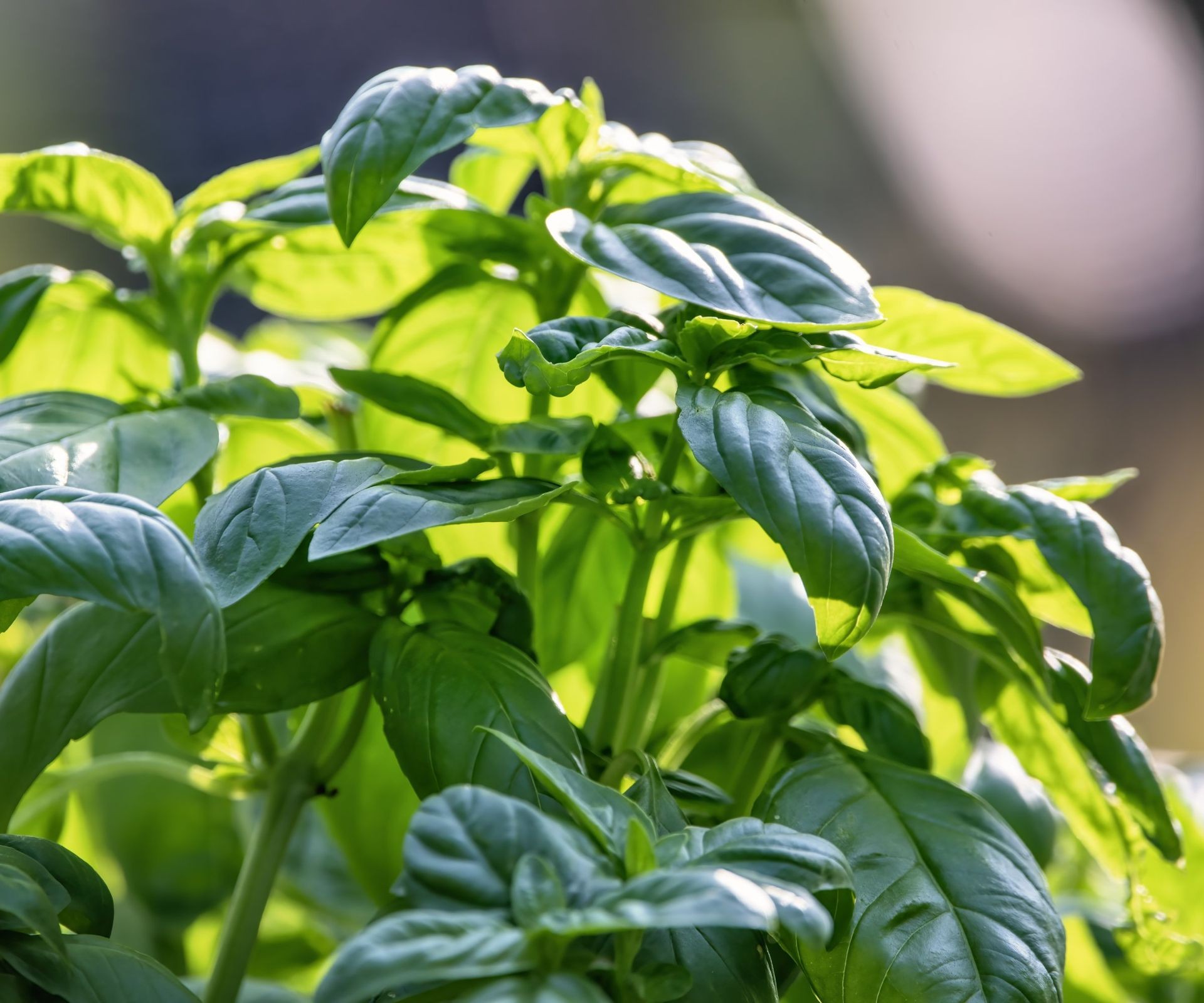 Lush green basil plants growing healthily in a sunny garden bed, ideal for companion planting with tomatoes.
Lush green basil plants growing healthily in a sunny garden bed, ideal for companion planting with tomatoes.
Beyond its delicious contribution, basil provides significant benefits to tomatoes. Research and grower experience indicate that tomatoes grown with basil companions often exhibit improved growth and potentially enhanced fruit flavor. Basil’s distinct aroma is known to deter pests like thrips, which can transmit harmful viruses, and it confuses moths that lay the eggs of dreaded tomato hornworms. When flowering, basil attracts essential pollinators like bees, further boosting your garden’s productivity. There are many wonderful types of basil to explore, from classic Genovese to Thai and lemon varieties, and many are quick and easy to start from seed.
Parsley
Another excellent culinary partner for tomatoes is parsley. Its fresh, green notes provide a perfect contrast to the richness of tomato-based sauces and dishes. In the garden, parsley serves as a valuable companion by attracting beneficial insects. It’s a host plant for beautiful swallowtail butterflies and also draws in hoverflies, whose larvae are voracious predators of aphids and thrips, two common tomato pests.
Since parsley generally grows lower than tomato plants and appreciates some afternoon shade, planting it directly next to or between tomato rows is an ideal arrangement. It’s relatively simple to grow from seed. You can choose between the curly leaf types, which are often used for garnish, and the flat-leaf or Italian varieties, typically favored for their more intense flavor and nutritional value.
Mint
While perhaps a less obvious culinary pairing than basil or parsley, fresh mint can add a surprisingly delightful twist to tomato dishes, such as light summer salads or cold soups like gazpacho. In the garden, mint proves its worth by acting as a deterrent for aphids, flies, and flea beetles. The strong, pleasant fragrance released by mint plants is unpleasant to these common pests. To maximize its deterrent effect, gently brush or harvest mint leaves frequently to release more of its aromatic oils.
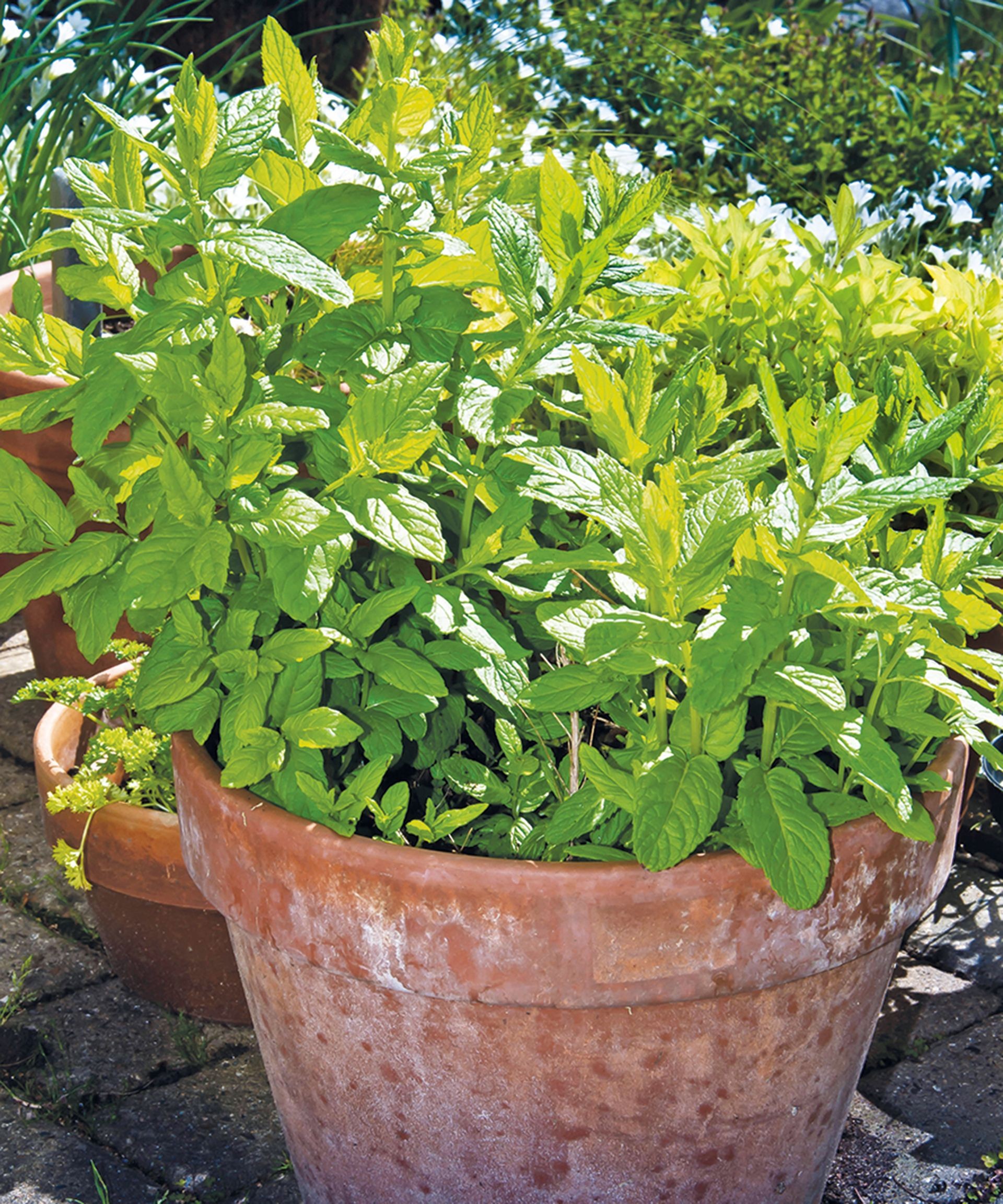 Aggressively spreading mint contained in a terracotta pot, perfect for placing near tomatoes to deter pests.
Aggressively spreading mint contained in a terracotta pot, perfect for placing near tomatoes to deter pests.
One crucial consideration when growing mint is its vigorous and spreading nature. To harness its companion benefits without it taking over your garden beds, it’s highly recommended to grow mint in containers placed strategically near your tomato plants. Even in pots, keep an eye on its runners and trim any that try to escape. Mint grows readily from seed, allowing you to start plants at the same time as your tomatoes for synchronized benefits. Different mint varieties offer distinct flavors, from classic spearmint to invigorating peppermint.
Oregano
Oregano is a staple in many tomato-centric cuisines, bringing its signature savory depth to sauces and pizzas. As a garden companion, oregano’s robust scent helps mask the aroma of tomato plants, making them less detectable to certain pests. It’s also known to be less appealing to deer. Furthermore, oregano attracts beneficial insects like lacewings, whose larvae feed on aphids, whiteflies, and cutworms, all potential threats to tomatoes.
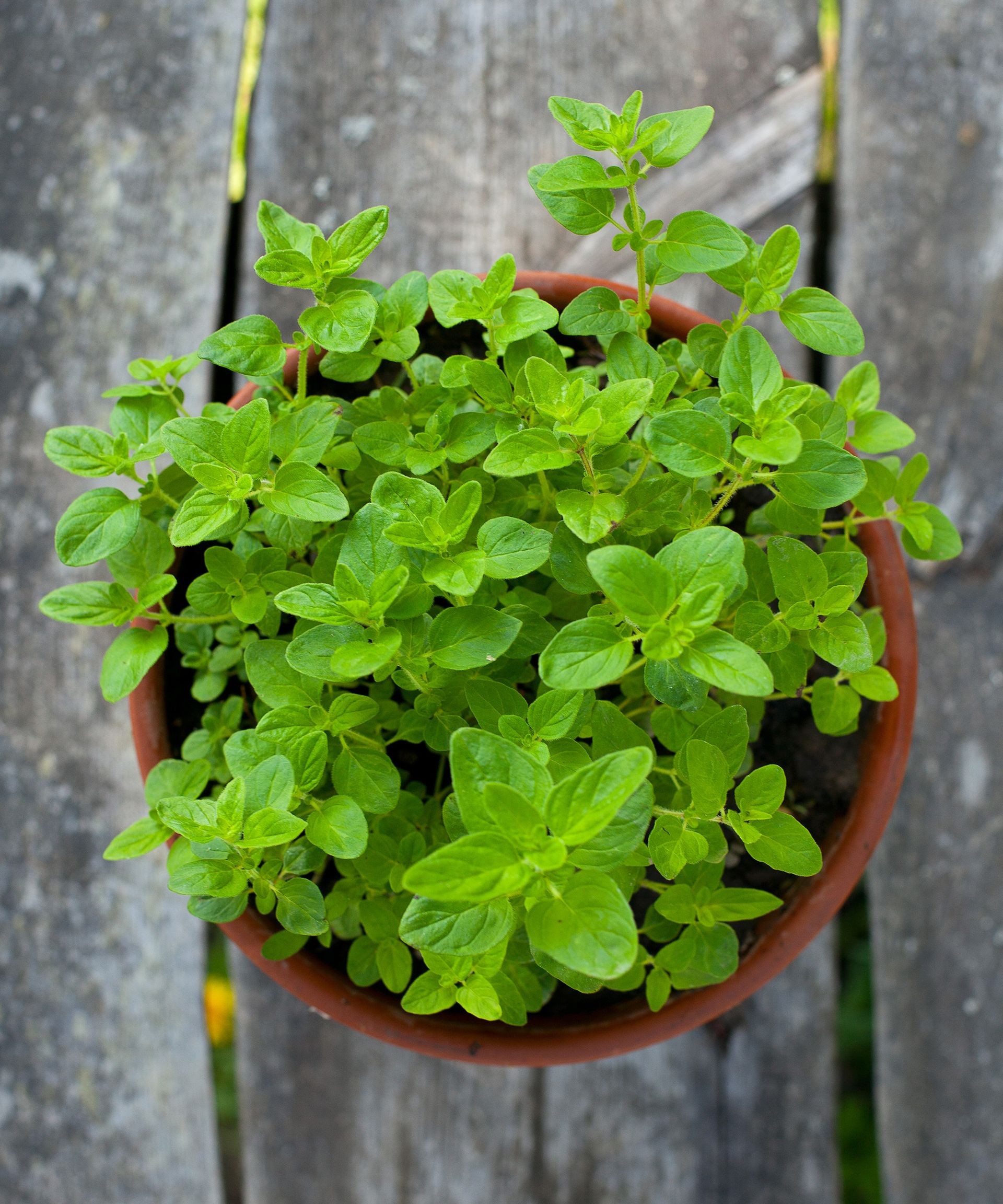 Aromatic oregano herb growing in a pot, used in companion planting to help protect tomatoes from pests.
Aromatic oregano herb growing in a pot, used in companion planting to help protect tomatoes from pests.
Growing close to the ground, oregano can be planted around the base of your tomato plants to function as a living mulch. This helps suppress weeds and retain soil moisture. Be aware that dense planting might reduce the oregano’s growth due to shade, so consider spacing or planting it where it gets adequate light. Oregano is easy to grow from seed, although its growth can be slow in the first year, so planning ahead is beneficial. Varieties like Italian and Greek oregano offer slightly different flavor intensities.
Thyme
Thyme is a wonderful culinary partner for cooked tomato dishes, adding depth to roasted tomatoes or pasta sauces. In the garden, thyme shares similarities with oregano but typically grows even lower, making it an excellent groundcover option. Using thyme between tomato plants or in rows can help prevent weed growth and reduce moisture evaporation from the soil. Certain varieties are particularly effective as natural groundcovers, while others are well-suited for containers near tomatoes.
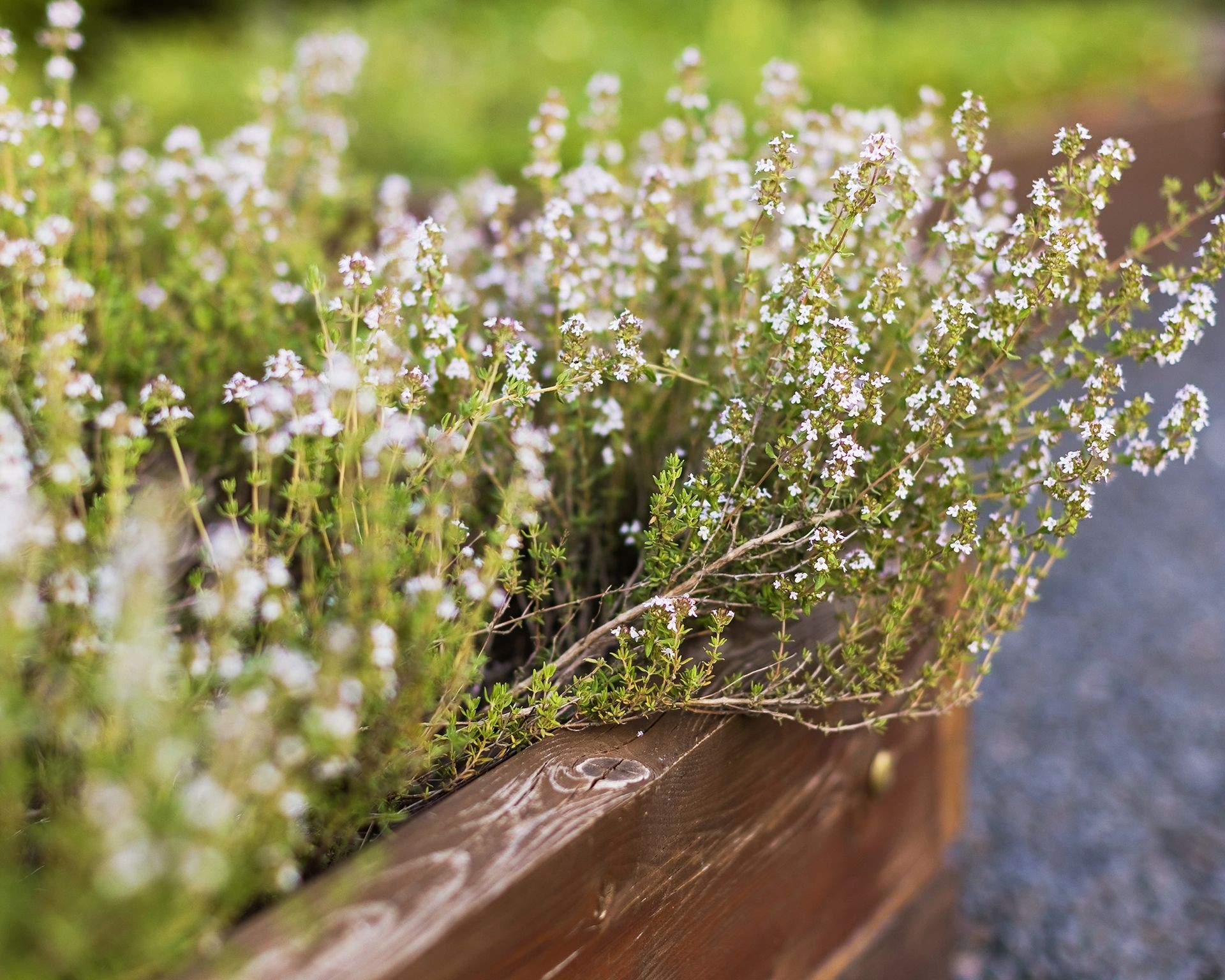 Low-growing flowering thyme providing ground cover and attracting beneficial insects near tomato plants.
Low-growing flowering thyme providing ground cover and attracting beneficial insects near tomato plants.
Thyme prefers full sun and slightly drier soil conditions than tomatoes. Avoid planting it directly under dense tomato foliage in beds where it might not get enough light or drain sufficiently. Containers around tomato plants are a good option, allowing the thyme to spill over and receive ample sunlight. Beyond its groundcover abilities, thyme’s scent deters pests like aphids, armyworms, and leafhoppers. When it flowers, it attracts pollinators and beneficial parasitic wasps known to prey on tomato hornworms.
Sage
Sage offers a rich, earthy flavor that complements hearty tomato dishes beautifully, pairing particularly well with roasted tomatoes, soups, or sauces often combined with cheese. In the garden, sage contributes through its strong scent, which can deter various pests, including cabbage moths and carrot flies that might otherwise bother nearby plants (and whose deterrence can indirectly benefit the overall garden health). Allowing sage to flower is key to attracting beneficial insects like parasitic wasps, natural enemies of the tomato hornworm, as well as a variety of pollinators. Sage flowers themselves are edible and can add a unique touch to salads.
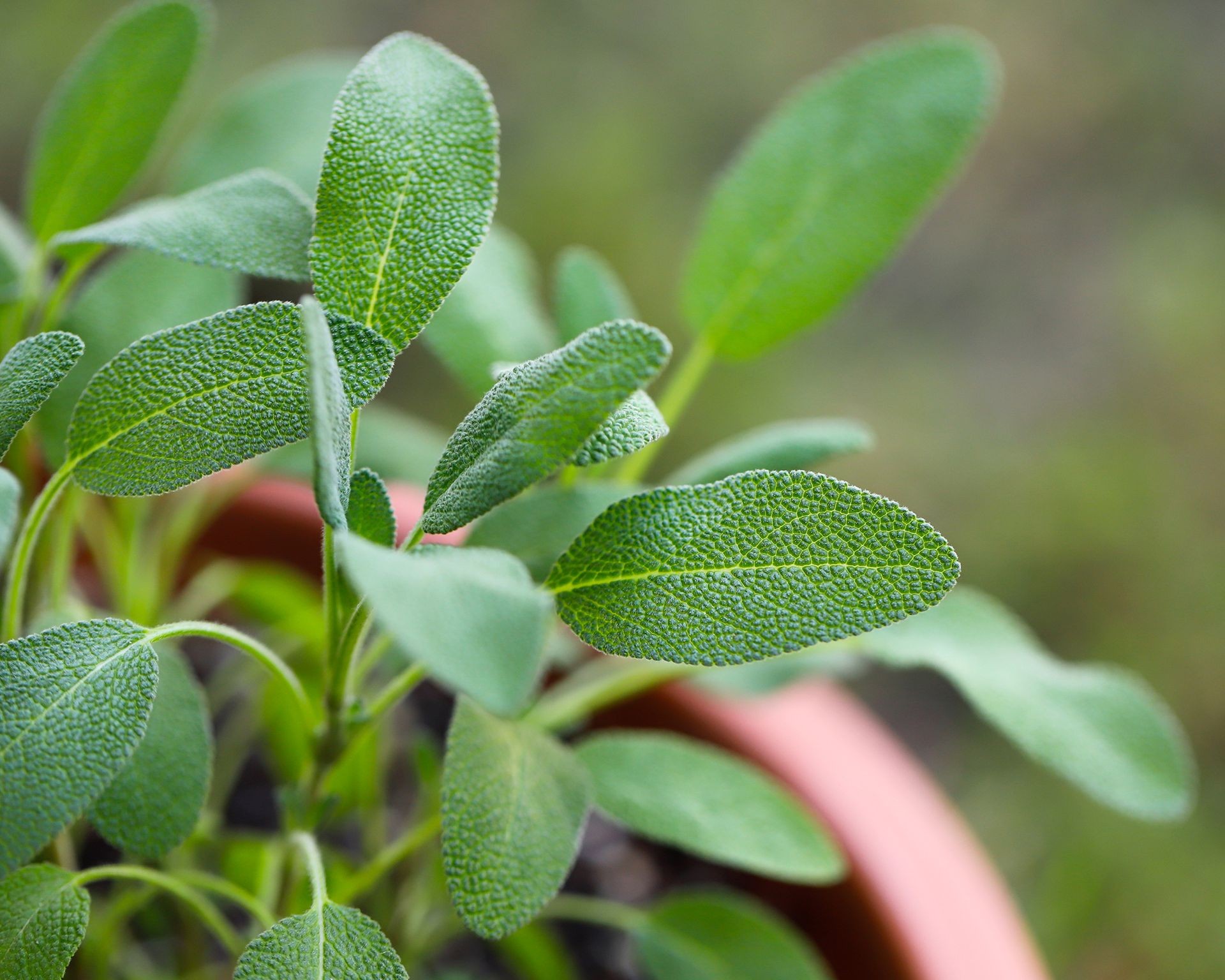 Hardy sage plant in a terracotta pot, used in companion planting to deter garden pests away from tomatoes.
Hardy sage plant in a terracotta pot, used in companion planting to deter garden pests away from tomatoes.
While sage can be grown from seed, it often takes a full year to become well-established enough for significant harvesting or maximum pest deterrence. To provide immediate protection for your current tomato crop, consider planting a young sage plant purchased from a nursery. Companion planting sage is an effective way to enhance the resilience of your tomato patch.
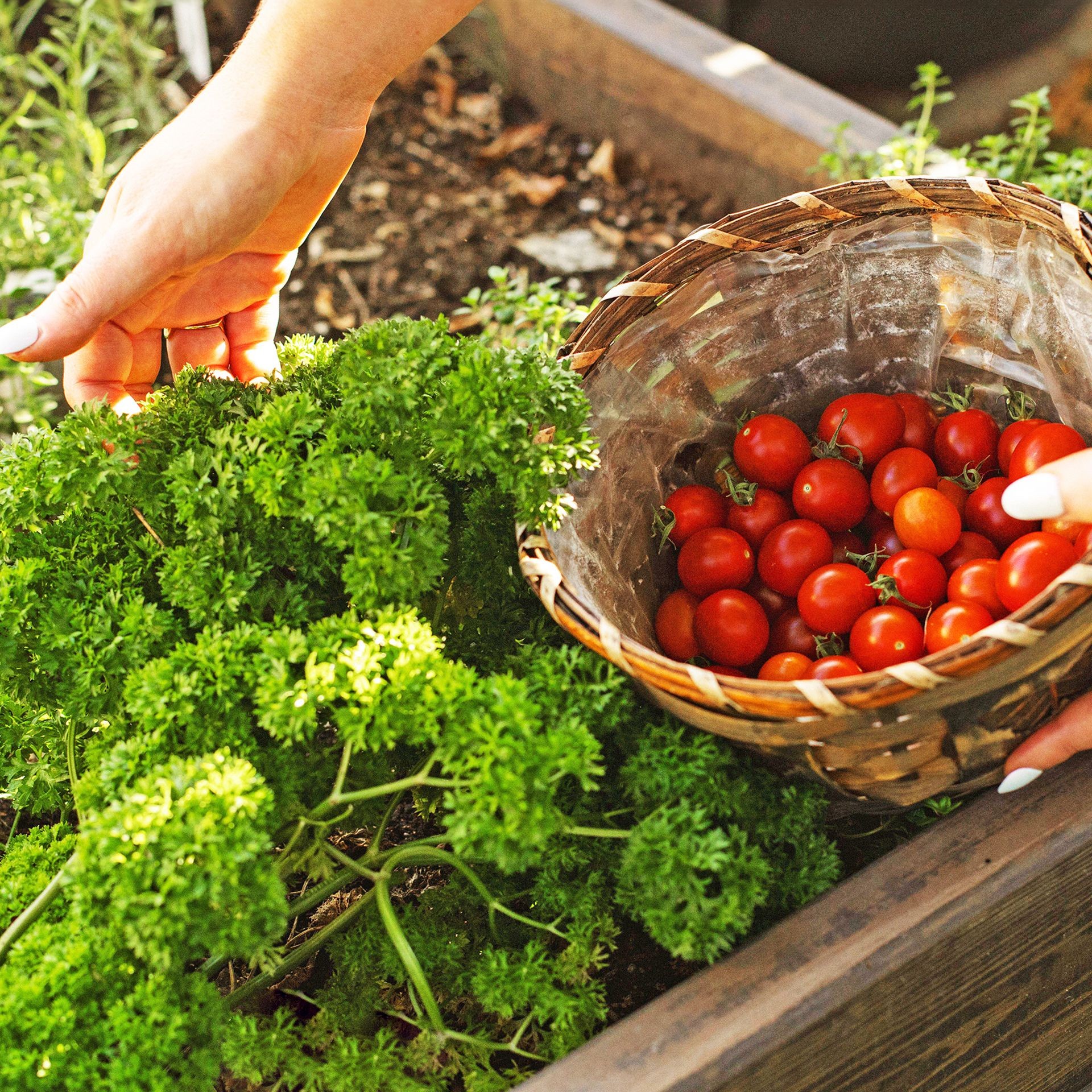 A gardener harvesting a basket of ripe tomatoes and fresh herbs grown together using companion planting techniques.
A gardener harvesting a basket of ripe tomatoes and fresh herbs grown together using companion planting techniques.
Companion planting is a powerful tool for creating a more balanced and productive garden ecosystem. By thoughtfully selecting herb companions for your tomato plants, you not only gain valuable allies in combating pests and improving plant health but also cultivate delicious ingredients ready for harvest alongside your tomatoes, bringing the garden’s benefits straight to your kitchen.
Ready to elevate your tomato harvest with the power of companion herbs? Explore the selection of seeds and planting supplies available at Biogarden.Asia to start your journey toward healthier plants and more flavorful tomatoes.



